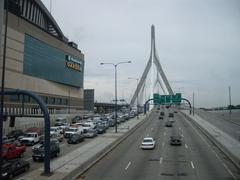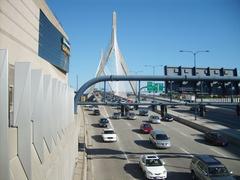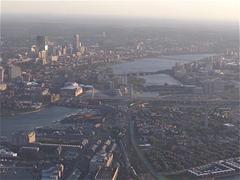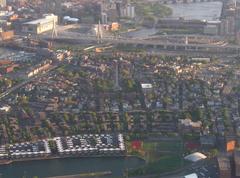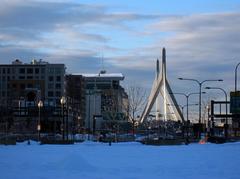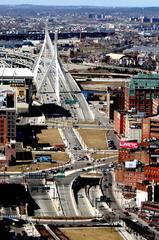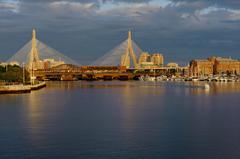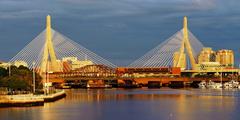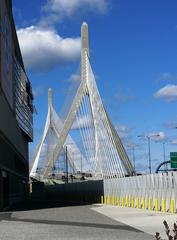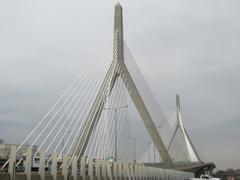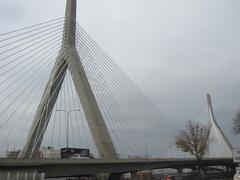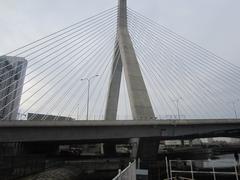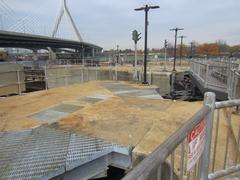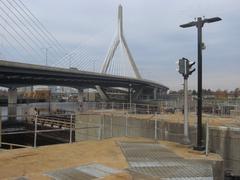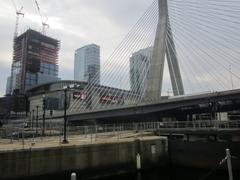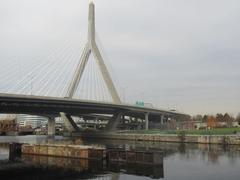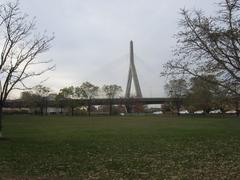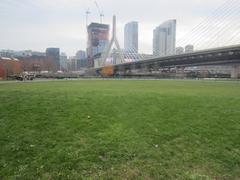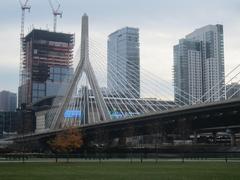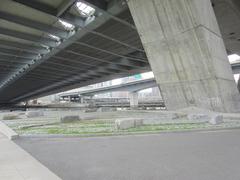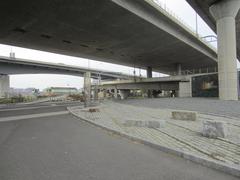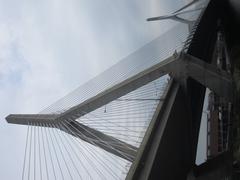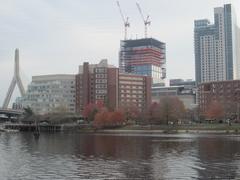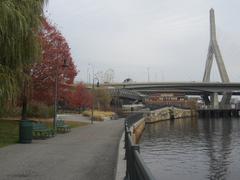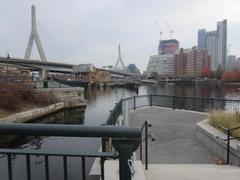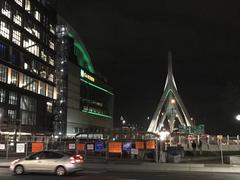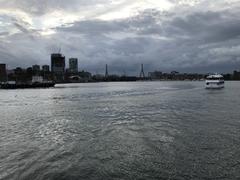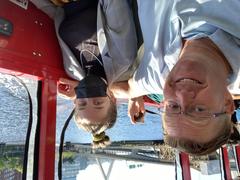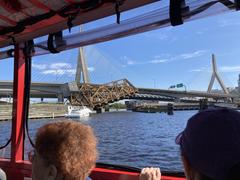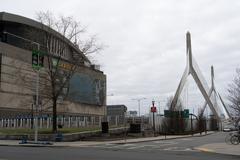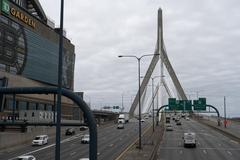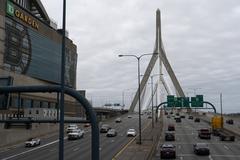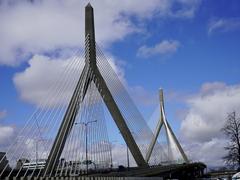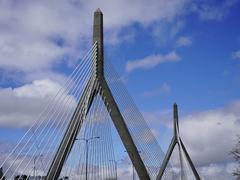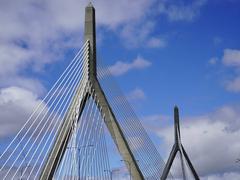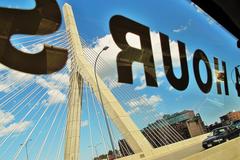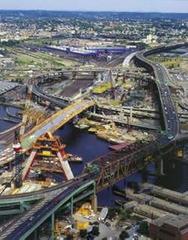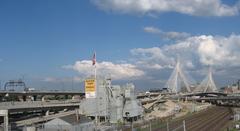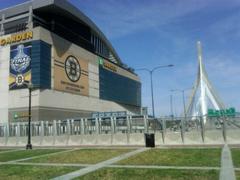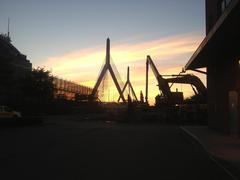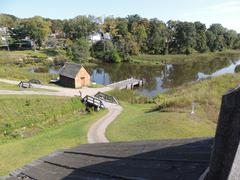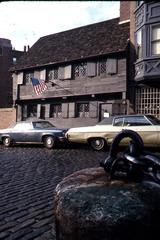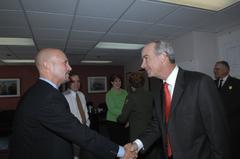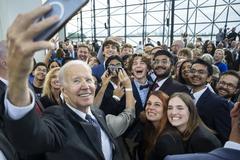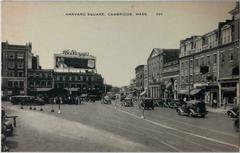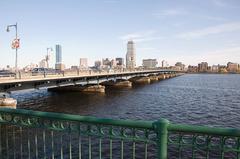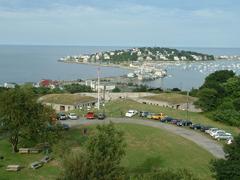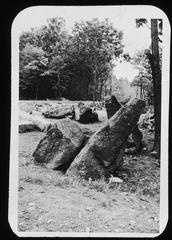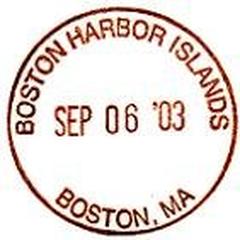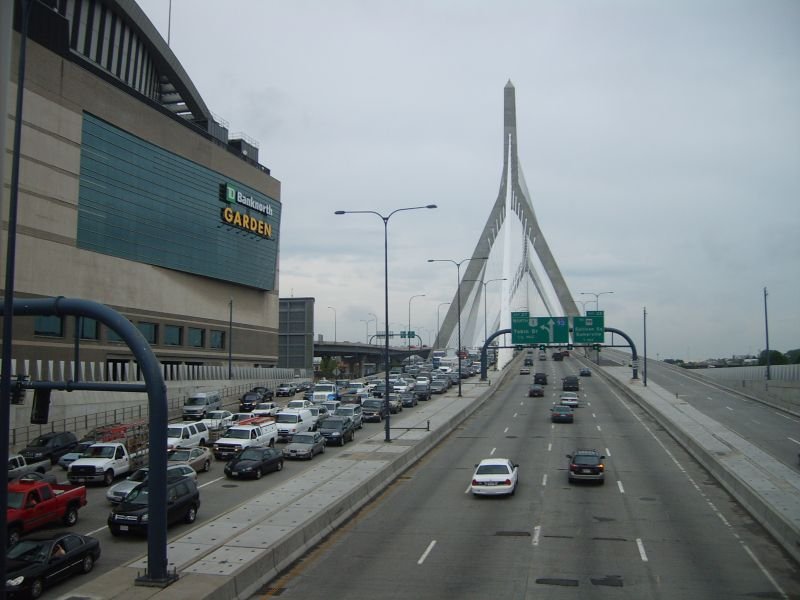
Leonard P. Zakim Bunker Hill Memorial Bridge Visiting Guide: Hours, Tickets, and Nearby Historical Sites
Date: 19/07/2024
Introduction
The Leonard P. Zakim Bunker Hill Memorial Bridge, commonly known as the Zakim Bridge, is a symbol of modern engineering and historical reverence in Boston, Massachusetts. This iconic structure, part of the Central Artery/Tunnel Project (the Big Dig), was designed to alleviate Boston’s traffic congestion and has since become a symbol of the city’s resilience and innovation (Boston Globe). Named after civil rights leader Leonard P. Zakim and commemorating the historic Battle of Bunker Hill, the bridge embodies Boston’s commitment to social justice and its rich Revolutionary War legacy (Boston.com). Designed by Swiss engineer Christian Menn along with the architectural firm HNTB, the bridge’s twin towers and fan-like cable arrangement make it a marvel of modern civil engineering (Massachusetts Department of Transportation). This guide provides comprehensive information on visiting the Zakim Bridge, including its history, significance, and practical tips for making the most of your visit.
Table of Contents
- Introduction
- Concept and Design
- Engineering and Architectural Significance
- Impact on Boston
- Cultural and Social Significance
- Visitor Information
- Nearby Attractions
- Photographic Spots
- Conclusion
- FAQs
- Call to Action
Concept and Design
The Zakim Bridge is a cable-stayed bridge that spans the Charles River in Boston, Massachusetts. Conceived as part of the Big Dig, a massive infrastructure project aimed at alleviating traffic congestion in Boston, the project became one of the most complex and expensive highway projects in the United States, with a total cost exceeding $14.6 billion (Boston Globe).
The bridge’s design was a collaborative effort between Swiss engineer Christian Menn and the architectural firm HNTB. The design was inspired by the historic Bunker Hill Monument, which commemorates the Battle of Bunker Hill. The bridge’s twin towers, which rise 270 feet above the water, are meant to evoke the monument’s obelisk shape (Massachusetts Department of Transportation).
Construction Timeline
Construction of the Zakim Bridge began in 1997 and was completed in 2003. The bridge was officially opened to traffic on March 30, 2003. The construction process involved the use of advanced materials and techniques. The bridge’s deck is supported by 116 cables, which are anchored to the twin towers and extend down to the deck, creating a visually striking fan-like pattern (Engineering News-Record).
Naming and Dedication
The bridge is named in honor of Leonard P. Zakim, a civil rights leader and head of the New England Anti-Defamation League, who passed away in 1999. Zakim was known for his efforts to promote understanding and cooperation among different racial and religious groups. The bridge’s name also pays homage to the Bunker Hill Monument, linking the structure to Boston’s rich historical heritage (Boston.com).
Engineering and Architectural Significance
The Zakim Bridge is notable for its innovative design and engineering. It is one of the widest cable-stayed bridges in the world, with a total width of 183 feet. The bridge’s main span is 745 feet long, and the total length of the bridge is 1,432 feet. The use of cable-stayed technology allows for a longer main span and a more slender, elegant structure compared to traditional suspension bridges (American Society of Civil Engineers).
The bridge’s design incorporates several features aimed at enhancing its aesthetic appeal and functionality. The twin towers are illuminated at night, creating a striking visual landmark. The bridge also includes pedestrian walkways, providing a unique vantage point for viewing the Boston skyline and the Charles River (Boston Harbor Now).
Impact on Boston
Transportation Infrastructure
The Zakim Bridge has played a crucial role in improving traffic flow in and around Boston, helping to alleviate the congestion that plagued the city for decades (Massachusetts Department of Transportation).
Cultural Landscape
The bridge has become an iconic symbol of the city, featured prominently in photographs, postcards, and other media. Despite challenges like cost overruns, delays, and engineering problems during the Big Dig project, the completion of the Zakim Bridge was widely celebrated as a major achievement and a testament to the ingenuity and perseverance of the engineers and workers involved (Boston Globe).
Cultural and Social Significance
Beyond its practical benefits, the Zakim Bridge holds a special place in the hearts of many Bostonians. The bridge is often used as a backdrop for public events and celebrations, including the annual Boston Marathon and the Fourth of July fireworks display. It has also been featured in several films and television shows, further cementing its status as a cultural icon (Boston.com).
The bridge’s dedication to Leonard P. Zakim serves as a reminder of the importance of social justice and community activism. Zakim’s legacy continues to inspire efforts to promote equality and understanding in Boston and beyond. The bridge stands as a symbol of the city’s commitment to these values, as well as its rich historical heritage and forward-looking spirit (Anti-Defamation League).
Visitor Information
Zakim Bridge Visiting Hours
The Zakim Bridge is accessible to pedestrians and cyclists 24/7. The bridge’s illumination at night makes it particularly stunning, and visitors can enjoy a walk or bike ride at any time.
Tickets and Guided Tours
There are no tickets required to visit the Zakim Bridge. However, guided tours that include the bridge as part of a broader exploration of Boston’s historical sites are available. Check local tour operators for availability and schedules.
Accessibility
The Zakim Bridge is designed to be accessible to all visitors, including those with disabilities. The pedestrian walkways are equipped with ramps and offer a smooth, continuous path across the bridge.
Nearby Attractions
While visiting the Zakim Bridge, consider exploring other nearby attractions such as the Bunker Hill Monument, the Boston Tea Party Ships and Museum, and the Freedom Trail. Each of these sites offers a unique glimpse into Boston’s historical and cultural landscape.
Photographic Spots
For photography enthusiasts, the Zakim Bridge offers numerous vantage points. The best spots include North Point Park, the Charles River Esplanade, and from the bridge itself during sunset or nighttime when the bridge is illuminated.
Conclusion
The Leonard P. Zakim Bunker Hill Memorial Bridge is more than just a piece of infrastructure; it is a symbol of Boston’s past, present, and future. Its innovative design and engineering have made it a landmark in the field of civil engineering, while its cultural and social significance have made it a beloved icon of the city. Whether viewed from afar or experienced up close, the Zakim Bridge offers a unique and memorable experience for all who visit.
FAQs
What are the visiting hours for the Zakim Bridge?
The Zakim Bridge is accessible to pedestrians and cyclists 24/7.
Are there guided tours available for the Zakim Bridge?
Yes, guided tours that include the Zakim Bridge as part of a broader exploration of Boston’s historical sites are available. Check local tour operators for availability and schedules.
Is the Zakim Bridge accessible for people with disabilities?
Yes, the bridge has pedestrian walkways equipped with ramps to ensure accessibility for all visitors.
Call to Action
Plan your visit to the Zakim Bridge today to experience the blend of history and modern engineering. For more information and updates, download our mobile app Audiala or follow us on social media to stay connected.
References
- Boston Globe
- Massachusetts Department of Transportation
- Engineering News-Record
- Boston.com
- American Society of Civil Engineers
- Boston Harbor Now
- Anti-Defamation League
- Boston.gov
- Boston Society of Civil Engineers Section (BSCES)
- MBTA
- Boston Harborwalk
- Boston Duck Tours
- Freedom Trail Tours
- NPS
- USS Constitution Museum
- TD Garden
- Eater Boston
- Boston Harborfest
- Head of the Charles Regatta
